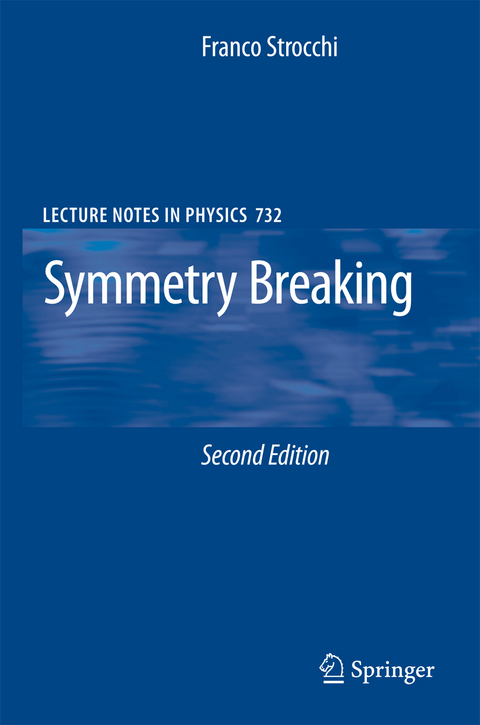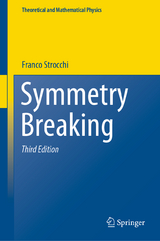
Symmetry Breaking
Springer Berlin (Verlag)
978-3-642-09273-2 (ISBN)
- Lieferbar
- Versandkostenfrei
- Auch auf Rechnung
- Artikel merken
Symmetry Breaking in Classical Systems.- Symmetries of a Classical System.- Spontaneous Symmetry Breaking.- Symmetries in Classical Field Theory.- General Properties of Solutions of Classical Field Equations.- Stable Structures, Hilbert Sectors, Phases.- Stability under Space Translations. Positive Energy.- Noether Theorem and Symmetry Breaking.- Examples.- The Goldstone Theorem.- Symmetry Breaking in Quantum Systems.- Quantum Mechanics. Algebraic Structure and States.- Fock Representation.- Non-Fock Representations.- Mathematical Description of Infinitely Extended Quantum Systems.- Physically Relevant Representations.- Cluster Property and Pure Phases.- Examples.- Symmetry Breaking in Quantum Systems.- Examples.- Constructive Symmetry Breaking.- Symmetry Breaking in the Ising Model.- Thermal States.- Fermi and Bose Gas at Non-zero Temperature.- Quantum Fields at Non-zero Temperature.- Breaking of Continuous Symmetries. Goldstone's Theorem.- The Goldstone Theorem at Non-zero Temperature.- The Goldstone Theorem for Relativistic Local Fields.- An Extension of Goldstone Theorem to Non-symmetric Hamiltonians.- Symmetry Breaking in Gauge Theories.- Erratum.- Erratum.
From the reviews of the second edition:
"This second edition of Strocchi's Symmetry breaking presents a complete, generalized and highly rigorous discussion of the subject, based on a formal analysis of conditions necessary for the mechanism of spontaneous symmetry breaking to occur in classical systems, as well as in quantum systems. ... this book is specifically recommended for mathematical physicists interested in a deeper and rigorous understanding of the subject, and it should be mandatory for researchers studying the mechanism of spontaneous symmetry breaking." (Serena Hajjawi, Mathematical Reviews, 2008)
"The monograph under review is devoted to the mathematical understanding of spontaneous symmetry breaking (SSB) ... . The monograph gives a strong mathematical base to the SSB phenomena in applied mathematics and physics. Therefore it will be very useful for mathematicians and physicists, students of relevant specialties." (Boris V. Loginov, Zentralblatt MATH, Vol. 1145, 2008)
| Erscheint lt. Verlag | 18.11.2010 |
|---|---|
| Reihe/Serie | Lecture Notes in Physics |
| Zusatzinfo | X, 216 p. |
| Verlagsort | Berlin |
| Sprache | englisch |
| Maße | 155 x 235 mm |
| Gewicht | 357 g |
| Themenwelt | Naturwissenschaften ► Physik / Astronomie ► Allgemeines / Lexika |
| Naturwissenschaften ► Physik / Astronomie ► Theoretische Physik | |
| Schlagworte | Algebraic Structure • Gauge Theory • Goldstone Theorem • Higgs Mechanism • Mathematical Physics • Particle physics • quantum mechanics • Spontaneous Symmetry Breaking • theoretical physics |
| ISBN-10 | 3-642-09273-X / 364209273X |
| ISBN-13 | 978-3-642-09273-2 / 9783642092732 |
| Zustand | Neuware |
| Haben Sie eine Frage zum Produkt? |
aus dem Bereich



